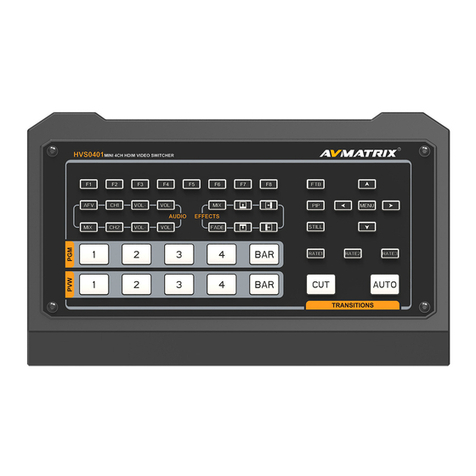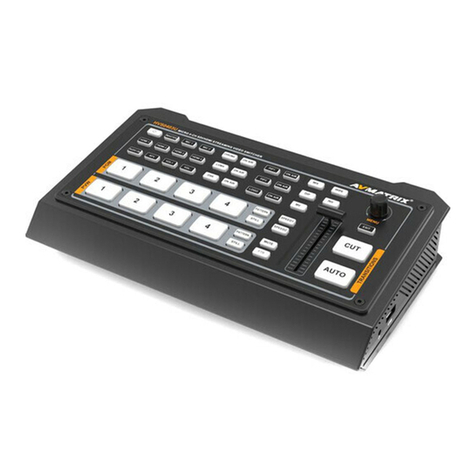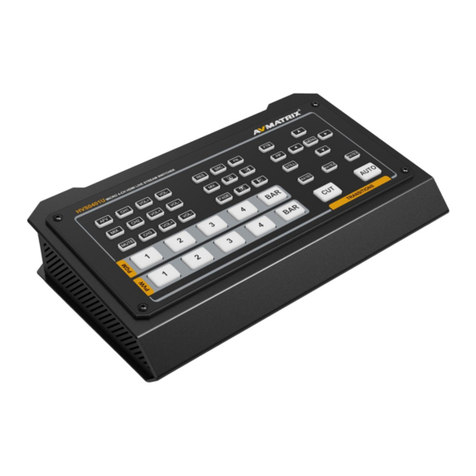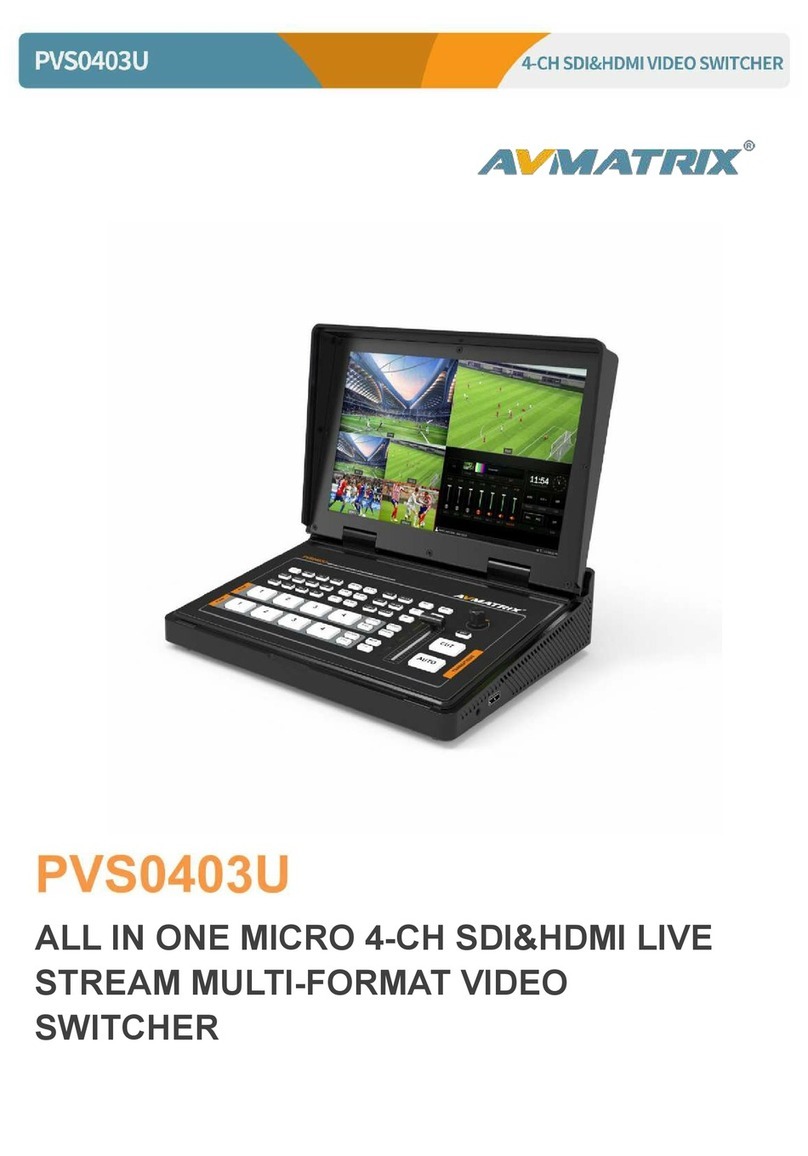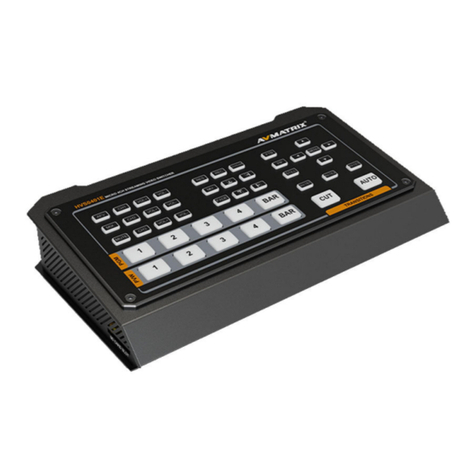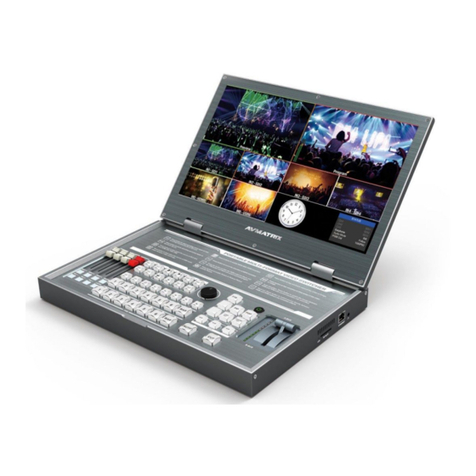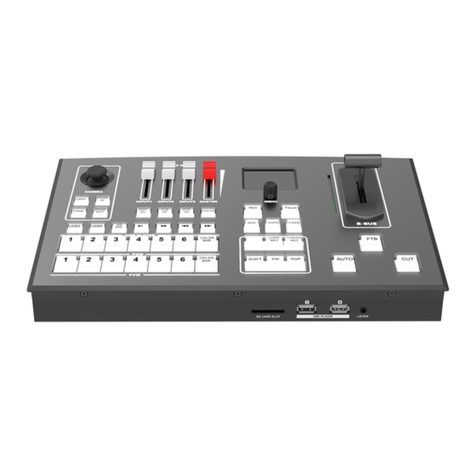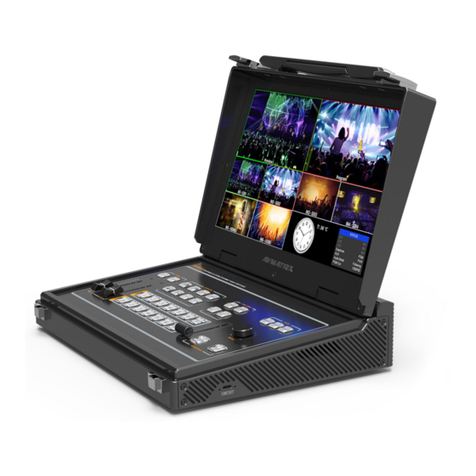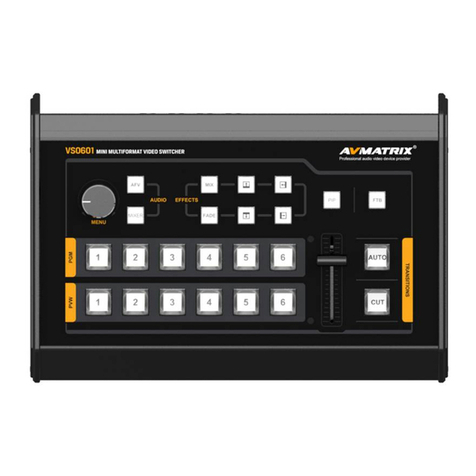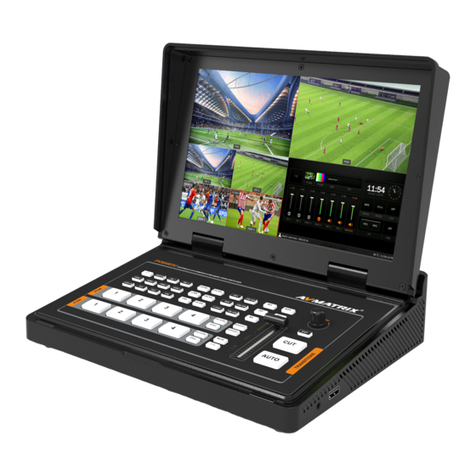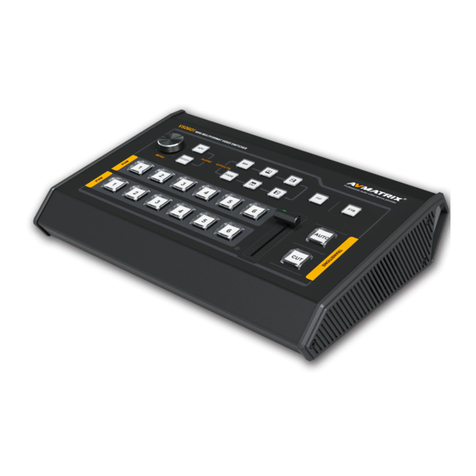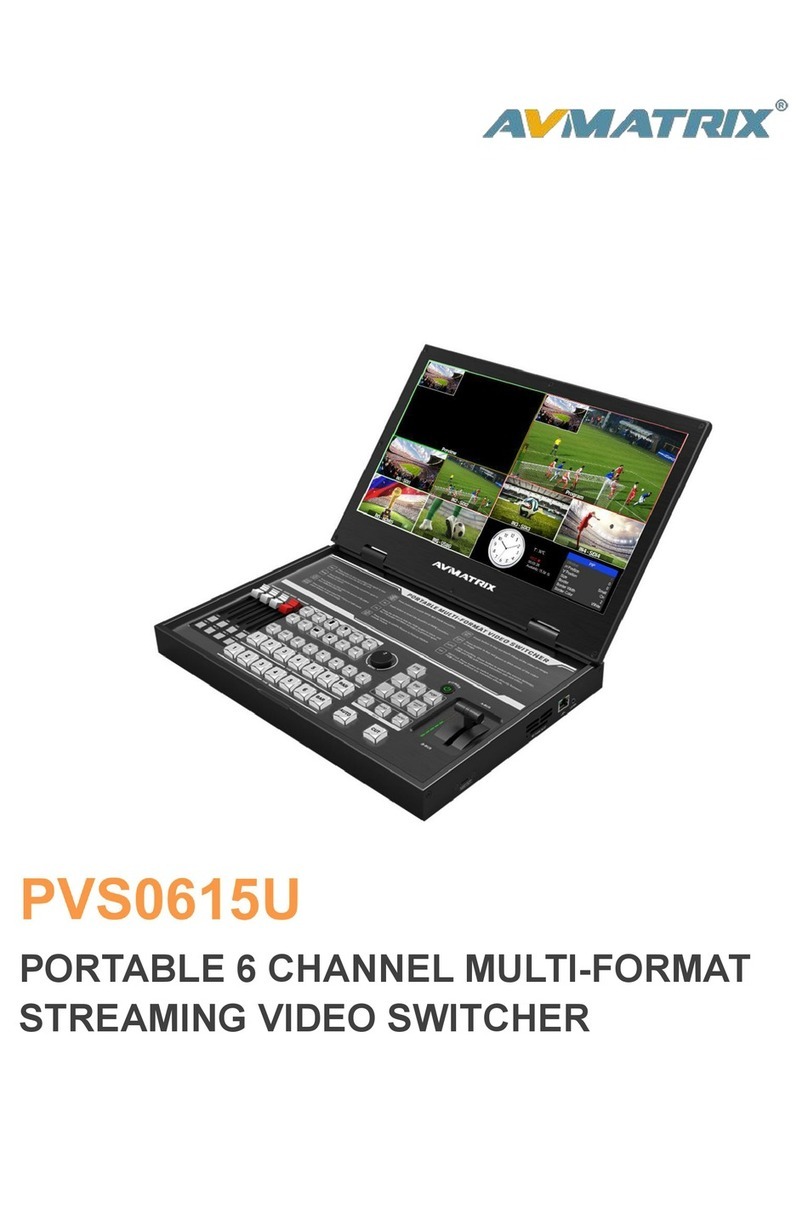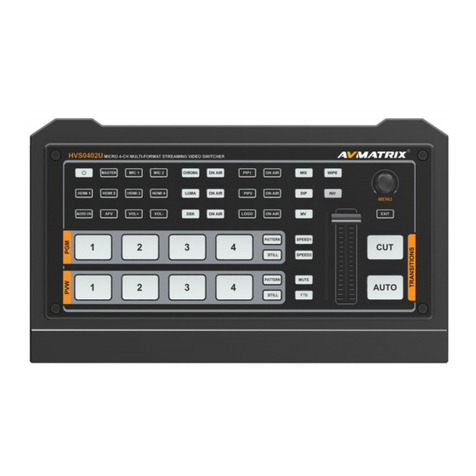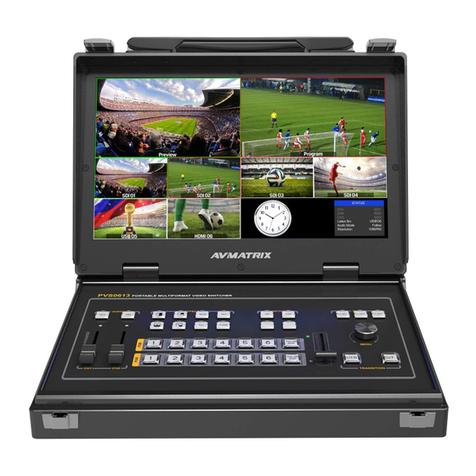www.avmatrix.net
Contents
1.Brief Introduction.............................................................................................................................................1
1.1 Overview...................................................................................................................................................1
1.2 Main Features..........................................................................................................................................1
2. Connections ...................................................................................................................................................2
2.1 Interfaces..................................................................................................................................................2
2.2 Specification.............................................................................................................................................3
3. Control Panel .................................................................................................................................................5
3.1 Description ...............................................................................................................................................5
3.2 Keyboard Button......................................................................................................................................6
4. Operation Instruction.....................................................................................................................................9
4.1 Multiview Output Layout.........................................................................................................................9
4.2 T-Bar Calibration.................................................................................................................................. 10
4.3 PGM PVW Switching........................................................................................................................... 10
4.3.1 PGM, PVW Channel Selection................................................................................................... 10
4.3.2 Transition Control.......................................................................................................................... 11
4.3.3 FTB (Fade to Black)..................................................................................................................... 12
4.3.4 Source Selection of Channel 5 and Channel 6........................................................................ 12
4.3.5 USB Media Player......................................................................................................................... 12
4.4 Transition Effects.................................................................................................................................. 13
4.4.1 MIX Transition............................................................................................................................... 13
4.5.2 WIPE Transition............................................................................................................................ 13
4.4.2 FADE Transition............................................................................................................................ 13
4.5 PIP and POP......................................................................................................................................... 14
4.6 Chroma Key.......................................................................................................................................... 15
4.7 Luma Key.............................................................................................................................................. 15
5. Camera Remote Control........................................................................................................................... 16
5.1 Camera Setting..................................................................................................................................... 16
5.2 RS-422 Interface Define...................................................................................................................... 16
6. Main Menu Settings ................................................................................................................................... 17
6.1 SDI PGM/AUX and Multiview Output Format.................................................................................. 17
6.2 Audio Mixer Settings............................................................................................................................ 17
6.2.1 Audio Description.......................................................................................................................... 17
6.2.2 Audio Mode.................................................................................................................................... 17
6.3 System Settings.................................................................................................................................... 18
6.3.1 Language....................................................................................................................................... 19
6.3.2 Clock............................................................................................................................................... 19
6.3.3 Clock Time Setting........................................................................................................................ 19
6.4 Network Settings.................................................................................................................................. 19
6.4.1 Network .......................................................................................................................................... 19
6.4.2 Netmask......................................................................................................................................... 19
6.4.3 Gateway......................................................................................................................................... 19
6.5 Video Record........................................................................................................................................ 19
6.5.1 Basic Specification........................................................................................................................ 19
6.5.2 SD Card Install and Uninstall...................................................................................................... 20
6.5.3 Recording Control......................................................................................................................... 20
6.5.4 Recording Settings ....................................................................................................................... 20
